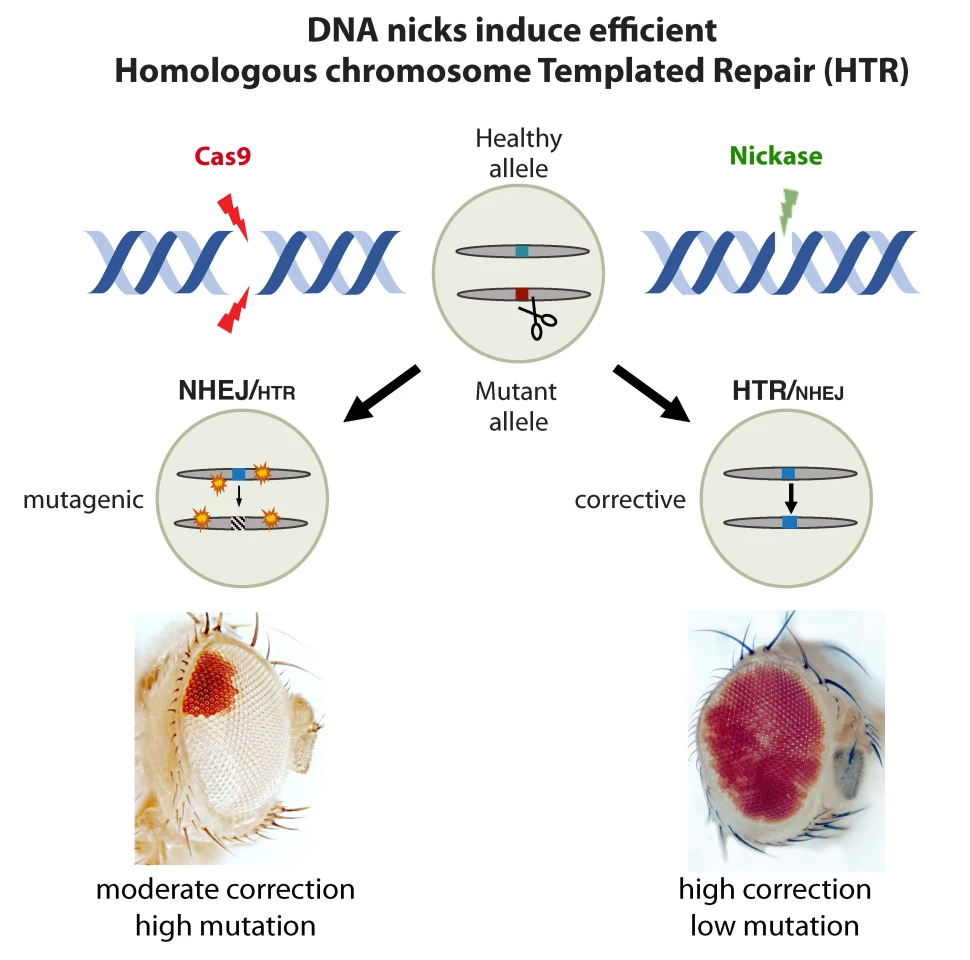Researchers at the University of California San Diego (UCSD) have demonstrated an intriguing new variation on the CRISPR gene-editing system, which involves fixing a mutation on one chromosome by copying a healthy version from the other. “Nicking” the DNA seemed to work better than cutting it.
In many genetic disorders, the defective mutation only occurs on one chromosome, while the other contains a functional version of that same gene. The new CRISPR tool corrects the mutation in one chromosome by copying the healthy gene from the other, a process that the team calls homologous chromosome-templated repair (HTR).
To demonstrate the method in action, the team engineered fruit flies with a visually obvious mutation – pure white eyes, which would form red patches if the gene editing worked. And sure enough, the red pigment returned in many of the insects.
The team found that HTR could be made even more effective if it was paired with another recent CRISPR innovation called “nickases.” The usual Cas9 enzyme cuts both strands of the DNA, which has a lower success rate and can introduce errors. But nickases just cut one strand of DNA, allowing the edit to be made more precisely and safely.

In the fruit fly test, the team showed that CRISPR-Cas9 had a repair success rate of just 20 to 30 percent, often only returning small patches of red to the insects’ eyes while also introducing frequent off-target mutations. The nickases, on the other hand, repaired 50 to 70 percent of the targeted genes, restoring eye color almost back to normal with far fewer unintended mutations.
The team says that the new technique could eventually be applied to human cells, but much more work still needs to be done first.
“We don’t know yet how this process will translate to human cells and if we can apply it to any gene,” said Annabel Guichard, senior author of the study. “Some adjustment may be needed to obtain efficient HTR for disease-causing mutations carried by human chromosomes.”
The research was published in the journal Science Advances.
Source: UCSD





